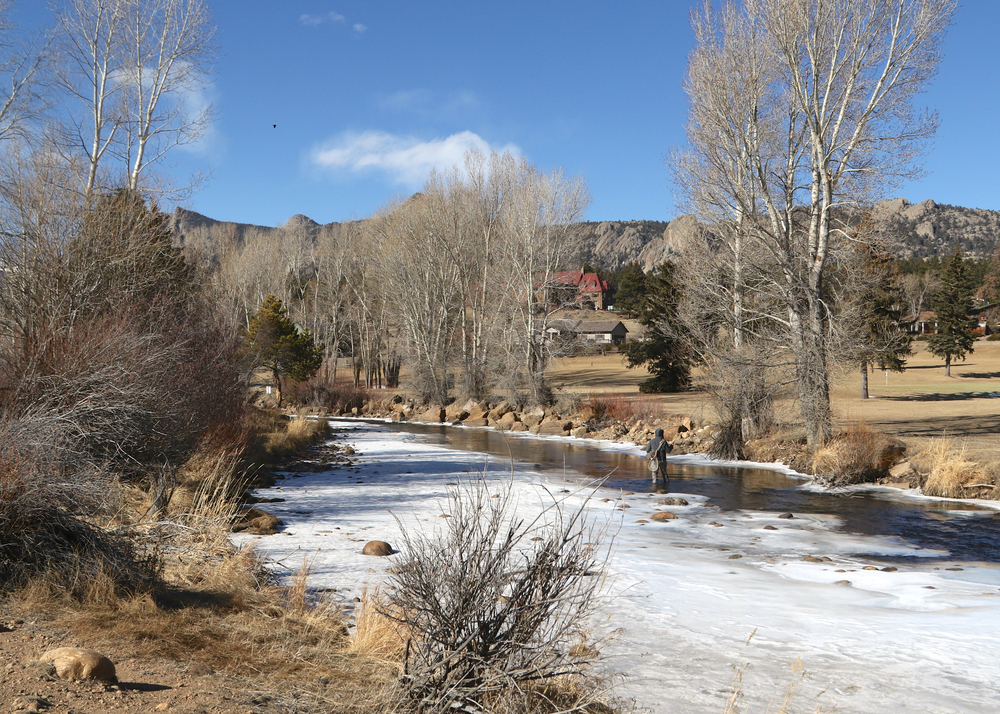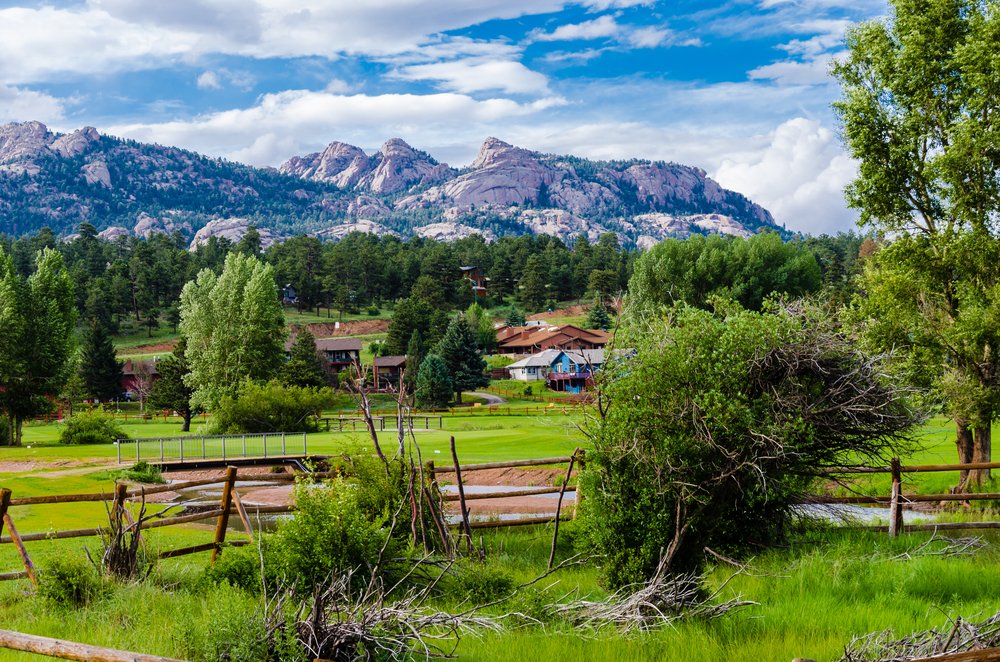Yes, altitude sickness is always a real risk for people visiting Estes Park. That’s primarily because both the town and sights surrounding it are high up in the mountains. To keep yourself safe, it’s important to acclimate first and slow down during your first few days in the area!
The renowned summer getaway and the jewel of the Rocky Mountains, Estes Park, boasts sprawling forests, majestic views, and tons of outdoor activities. It’s the perfect destination for those who love a scenic vacation that isn’t on the beach.
However, since Estes Park is located over 7,500 feet (2,200 meters) above sea level, many tourists worry about the altitude. So, can you get altitude sickness in Estes Park?
If you’re also asking the same question, we’ve got you covered! In this guide, we’ll talk about everything you need to know about altitude sickness in Estes Park, including:
- The common symptoms and complications related to altitude sickness
- What you should do if you get altitude sickness
- Tips to prevent altitude sickness and keep yourself safe.
Let’s get into it!

How High up Is Estes Park, Colorado?
Estes Park is nestled at a comfortable altitude of 7,522 feet (2,293 meters) above sea level, but some of the popular destinations around it are even higher.
For example, the well-loved Bear Lake Hike reaches heights of up to 9,450 feet, while Emerald Lake is just a little over 10,100 feet. And if you’re journeying to the Visitors Center, you’re looking at an altitude of almost 12,200 feet above sea level!
These heights are concerning, especially because altitude sickness can set in as low as 8,000 feet. However, you’ll experience its effects much faster if you ascend too quickly and don’t give your body enough time to adjust to the higher altitude.
What this means for you is that traveling to Estes Park and not acclimatizing before visiting popular tourist spots can cause altitude sickness!
What Are the Common Symptoms of Altitude Sickness?
So now you know altitude sickness can strike you if you go higher than 8,000 feet – but why does it happen?
Basically, you’ll become sick as there’s less oxygen in the air for your body to absorb. This causes your body to work in overdrive, and if you don’t take it easy at first, altitude sickness can kick in.
The symptoms of altitude sickness usually appear within the first 12 to 24 hours of being at a high altitude. Depending on how you’re behaving, though, these symptoms can appear gradually or instantly (Source: WebMD).
As per Cleveland Clinic, altitude sickness comes in three forms and levels of severity, each with its own symptoms:
Acute Mountain Sickness (AMS)
If you suddenly go to higher altitudes and then start feeling dizzy or weak, you might be feeling the effects of acute mountain sickness (AMS). This is a mild case of altitude sickness, but you should treat it as a warning not to push yourself.
Many people often describe AMS as similar to a hangover. Aside from that, though, here are some more symptoms to watch out for:
- Fatigue
- Insomnia
- Headache
- Nausea
- Vomiting
- A rapid heart rate
- Shortness of breath.
As long as you pay attention to your body and acclimate for a few days, AMS should go away on its own.
High-Altitude Pulmonary Edema (HAPE)
This is a more serious type of altitude sickness, as it’s one that affects your lungs and stops them from functioning normally. HAPE occurs when fluids fill your lungs, making it a lot harder to breathe. It feels like you’re drowning high up in the air!
HAPE is life-threatening and can be fatal, so it’s best to pay attention to the symptoms and seek immediate medical attention if you experience any of the following:
- Breathing difficulties
- Breathlessness when walking or hiking
- Severe coughing
- General weakness
- A tight feeling in your chest
- Your skin or lips appear slightly blue.
High-Altitude Cerebral Edema (HACE)
If AMS persists, it can cause fluid buildup in your brain – a condition called high-altitude cerebral edema (HACE).
Like HAPE, HACE is another life-threatening condition that demands immediate medical attention, so it’s best that you’re aware of the symptoms:
- Severe drowsiness and weakness
- Confusion
- Irritability
- Trouble walking, as if you’re drunk.
While you likely won’t be at risk of HAPE or HACE in Estes Park, it can occur when you’re visiting nearby, higher destinations. Don’t push yourself too hard!
Tips to Prevent Altitude Sickness in Estes Park
Visiting Estes Park doesn’t have to mean putting yourself in harm’s way! Follow these tips to prevent altitude sickness and keep yourself safe to enjoy the town’s numerous activities and views.
1. Look After Your Body
The single, biggest thing you can do for yourself is to look after your body! Once you reach Estes Park, it’s a great idea to slow down and not do anything too crazy.
Remember: you’ve just exposed yourself to a new environment – one your body isn’t used to. So, rest up and go on a gentle stroll instead of immediately hiking or visiting all the attractions!
At higher altitudes, you need to eat more – even if you don’t feel as hungry. Appetite loss is common, but it’ll gradually wear off as your body adjusts to the altitude.
Get as much sleep as you can, but know that it’s common for people to not sleep well during the first night or two. You should only do more intense activities only after your body has gotten used to the elevation!
2. Drink Plenty of Water
Hydration is even more important at higher altitudes, and drinking plenty of water is one of the best ways to prevent altitude sickness. Colorado’s humidity might be lower than what you’re used to, so make sure to up your water intake.
Here’s something to watch out for: you might not feel as thirsty because of the cooler weather. However, you actually lose water much faster in higher altitudes, so rehydrate as often as you can!
3. Know the Symptoms
Knowledge is power, but it can also be a shield that protects you from harm!
As much as possible, brush up on all the symptoms before traveling to high altitudes. If you know what mild and serious symptoms to watch out for, you can prepare yourself better.
Check out the CDC’s altitude tips and symptoms here.
4. Avoid Caffeine and Alcohol
While coffee and alcohol are both treats at lower elevations, theycan trip you up at high altitudes. These two can worsen dehydration and make it much harder for your body to adjust to a new environment.
If you’re really itching for a drink, it’s best to wait at least 48 hours before getting a nice cup of coffee or downing a shot.
What Should You Do If You Get Altitude Sickness?
Altitude sickness is caused by higher altitudes, so if you start feeling any symptoms, the first thing you should do is descend and rest up. This will reduce the toll on your body and allow it to begin recovery.
If you’re hiking, head back down the mountain. If you’re experiencing severe symptoms, drop everything and seek medical attention immediately.
For milder cases, take a break, let your body adjust, and drink plenty of water. Pain medications like ibuprofen and paracetamol can help stave off headaches and other muscle aches. As you would with any other sickness, just take things easy.
If you require medical attention while in Estes Park, the best place to go is Estes Park Health. The urgent care center is located on the corner of U.S. Highway 34 and Steamer Drive at 420 Steamer Drive. You can also contact them at 970-577-4500.
In an emergency, always call 911.
FAQs
Is altitude sickness common in Estes Park?
Altitude sickness isn’t all that common in Estes Park. In fact, it’s actually one of the best places to acclimate and train for higher altitudes. However, this doesn’t mean you’re out of the woods; it’s best to be prepared as altitude sickness is always a risk.
Is Estes Park higher elevation than Denver?
Estes Park sits at a much higher elevation than Denver — a difference of over 2,000 feet, in fact! While Denver is at a more comfortable altitude of 5,276 feet (1,608 meters), Estes Park is at 7,522 feet (2,293 meters) above sea level.
What is the immediate cure for altitude sickness?
Since altitude sickness is caused by higher altitudes, the immediate cure is to descend to a much lower one (preferably an altitude your body is already used to). If you can’t, take a break from what you’re doing and drink lots of water. Pain medications can help.
How long does it take to acclimate to altitude in Colorado?
Give yourself around one to three days to get used to Colorado’s higher altitudes, especially if you’re visiting Estes Park. If hiking or visiting trails are on the schedule, spend the first few days acclimating. Make sure to plan for this beforehand so you can have fun safely!






